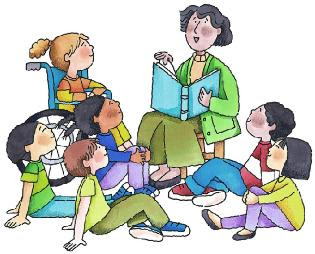I am huge fan of the Michel Thomas method. The only thing that is bothering me is that it hugely relies on translation. I was trained to use the target language as much as possible in the classroom and my mentor taught me a few tricks to get the students to understand me in the target language like using lots of cognates. Instead of saying “écrire“, I would say “copier” in French which means not exactly the same but which the students would understand straight away. Using the target language in the classroom involves a lot of patience from the teacher. Unfortunately, teachers happen to be running out of time to get across all they want to teach, so they fall back to English and translation. On one hand I understand Michel Thomas point about translating everything because his method also relies on the similarities between the English language and another language and about making connections. However I do believe in assimilating a language through a lot of input. You only have to look at babies to see that they don’t get any translation. In fact they have nothing to rely on to help them learn a language. They only rely on the people surrounding them: their gestures and faces.

Therefore, I was looking for an alternative to translation but I still wanted to keep Michel Thomas structures, because they form the basis to understand and communicate in Spanish or French (the two languages I know from this method). I have been reading a lot about the TPR Storytelling method lately and one website that I just love is Martina Bex because she posts a lot of practical resources and she is always so positive about what she does and her students. She creates lots of story scripts which repeat the target structures she wants the students to learn. For example, one script I will definitely use with my students next year is Buscando Gafas because it practices the three singular forms of the verbs “querer” and “tener”, which goes with Michel Thomas. From there, I thought of creating my own story scripts based on Michel Thomas structures. Today I wrote a first story to practice “es posible” and basic classroom instructions. I would tell this story to a grade 6 class (11-12 years old) on their first day of school or as a recap to other higher classes. In that case, I would maybe add more vocabulary related to classroom commands.
Here is the script (please send me some feedback!):
1. ¡Todo es posible!
Key structures:
-
Es posible – It is possible
-
Sacar las cosas – Take things out
-
Abrir el libro – Open the book
-
Escribir – To write
-
Hablar – To talk
-
Levantar la mano – To raise the hand
-
Aprender – To learn
-
Está preocupado – He is worried
-
Está contento – He is happy
Script:
Pedro tiene 6 años. Es su primer día en la escuela. Su maestra se llama Señora Martinez. Pedro está un poco preocupado. Es su primer día en la escuela. Pregunta a su maestra, Señora Martinez “ ¿Es posible sacar mis cosas?”. La Señora Martinez le dice a Pedro “Sí, es posible.” Entonces Pedro saca sus cosas de su mochila.
Pedro le pregunta a Señora Martinez “¿Es posible abrir el libro?”. La Señora Martinez le dice a Pedro “Sí, es posible.” Entonces Pedro abre el libro.
Pedro está un poco menos preocupado y le pregunta a Señora Martinez “¿Es posible escribir?”. La Señora Martinez le dice a Pedro “Sí, es posible.” Entonces Pedro escribe su nombre en su libro.
Pedro está menos preocupado pero le pregunta a Señora Martinez “¿Es posible hablar?”. La Señora Martinez le dice a Pedro “Sí, es posible pero levanta la mano primero.” Entonces Pedro levanta la mano. La Señora Martinez dice “¿Sí, Pedro?” y Pedro habla.
Pedro está contento. Le dice a Señora Martinez “¡En la escuela, todo es posible!”. Entonces Señora Martinez le dice “ ¡Sí, es posible aprender todo en la escuela!”.
Questions:
-
En la escuela, ¿es posible mirar a la pizarra?, ¿Es posible hablar durante la clase?
-
¿Es posible aprender en la escuela?
-
¿Qué es posible aprender?
-
¿Cuándo es posible guardar tus cosas?, ¿Cuándo es posible cerra el librar?
-
¿Estás preocupado/a en la escuela?
-
¿Estás contento/a en la escuela?